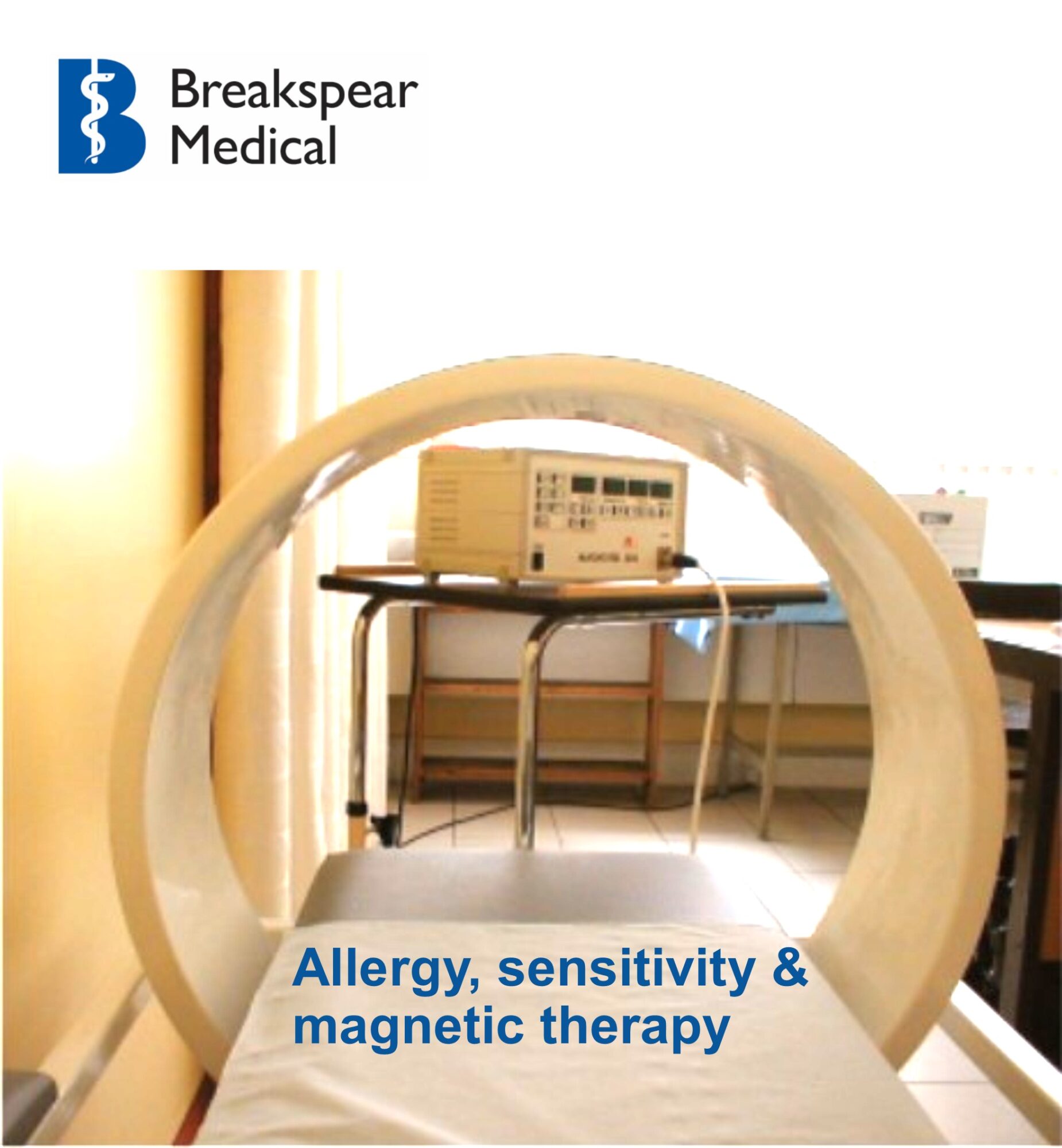If you are a patient at Breakspear Medical with allergies/sensitivities, chances are you are currently…

Allergy, sensitivity & magnetic therapy
For Allergy Awareness Week 22-28 April, in this blog, we’ve reprinted an article we published in 2004, which looked at the benefit of using pulsed magnetic therapy to reduce allergy/sensitivity.
Edited excerpt from Breakspear Medical Bulletin Issue 7:
It is believed that pulsed electromagnetic fields are able to rectify the abnormal responses that people have to everyday food and chemical encounters. This is critical in the management of patients with chronic inflammatory disorders.
Research into electromagnetic field therapy
At Breakspear Medical, we undertook research into electromagnetic field therapy using pulsed electromagnetic fields.
Our small scale test was to assess whether patients, after undergoing pulsed magnetic therapy,
would react to foods with the same intensity as previously experienced.
The first step was to conduct the ALCAT blood test for sensitivities on each of the 5 patients. This involved taking a blood sample and sending it to the AMTL Corp laboratories for evaluation on the 100 foods on the food panel.
We then exposed the 5 patients to 1 hour’s treatment on our Magnoter D26 and conducted a second ALCAT test on each of the 5 patients.
We continued to treat the patients with the pulsed magnetic therapy for 1 hour per day for 1 week and then repeated the ALCAT test for the third and final time.
Findings of the research
Of the 5 patients tested, the results for Patient E were not able to be interpreted. The results of the panel of 100 foods for the 4 interpreted patients are as follows:
Patient A— initially reacted to 25 of 100 foods. After 1 hour’s treatment, the number of reactive foods was reduced to 22. After 1 week of therapy, the number of reactive foods was reduced to 11 out of 100.
Patient B— initially reacted to 30 of 100 foods. After 1 hour’s treatment, the number of reactive foods was reduced to 21. After 1 week of therapy, the number of reactive foods was reduced to 7 out of 100.
Patient C— initially reacted to 22 of 100 foods. After 1 hour’s treatment, the number of reactive foods was reduced to 14. After 1 week of therapy, the number of reactive foods was reduced to 9 out of 100.
Patient D— initially reacted to 11 of 100 foods. After 1 hour’s treatment, the number of reactive foods increased to 12. After 1 week of therapy, the number of reactive foods increased to 16 out of 100. We hypothesise that Patient D had developed a viral infection between the post and final tests, which may explain the lack of improvement measured.
The results clearly show that 3 of the 4 patients show a remarkable improvement on the ALCAT results
after receiving electromagnetic therapy.
For over 15 years, the University of Saarbruecken Institute of Biology in West Germany has undertaken research establishing the physiology as well as the therapeutic benefits of these electromagnetic therapy treatments.
Other uses of magnetic therapy
The Magnoter D26 can also be adapted for use with great success for people with the following conditions:
• Arthritis
• Arthropathies
• Sports injuries such as bruises, pulled or torn ligaments and muscles, tennis elbow
• Delayed wound healing
• Headache and migraine
• Heart and circulatory diseases, circulatory disturbances
• Metabolic disorders
• Neuralgia
• Bronchitis and sinusitis, both acute and chronic
• Acute inflammations
• Bone union and non-union healing
• Idiopathic necrosis of the femoral head (Perthe’s disease)
• Osteoporosis
• Severe peripheral circulatory disorders including gravitational ulcers
• Sudeck’s atrophy (Osteoporosis following trauma)




